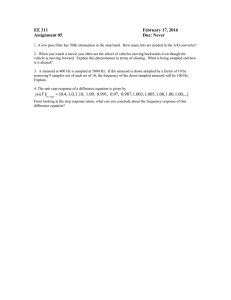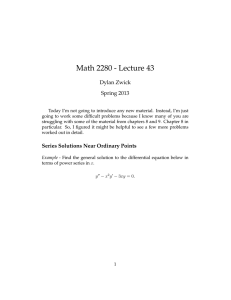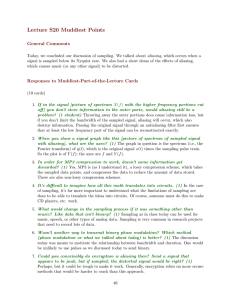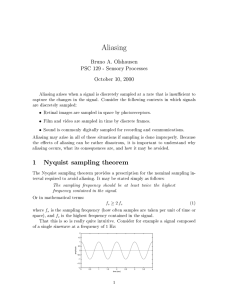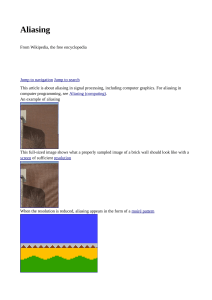5. Aliasing
advertisement
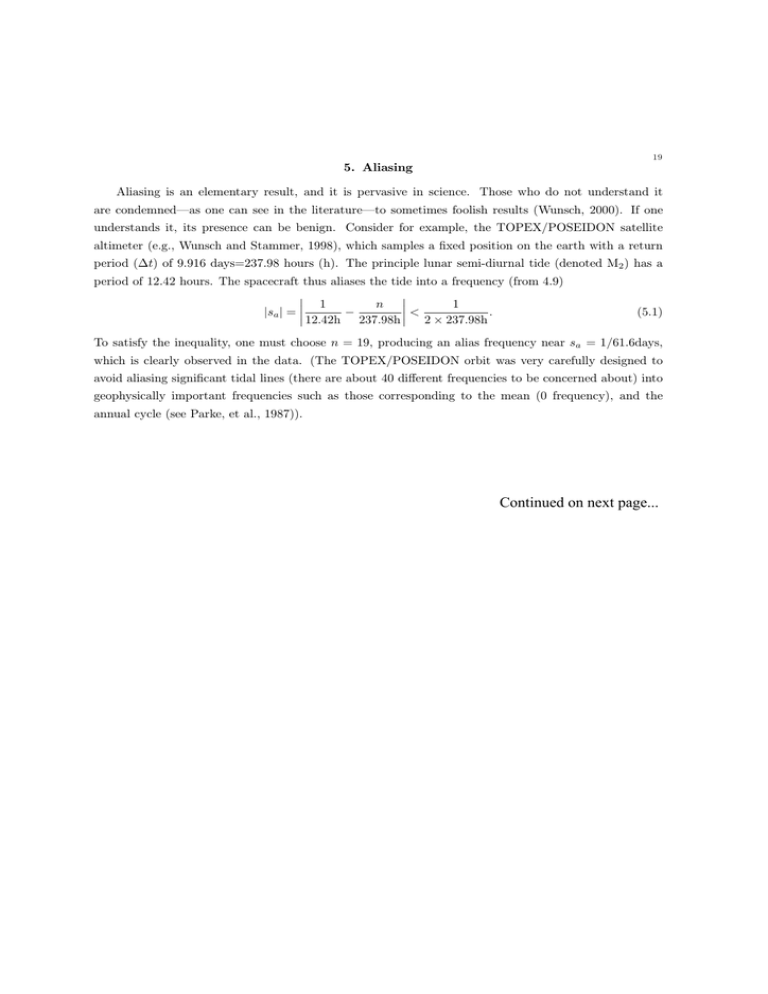
19 5. Aliasing Aliasing is an elementary result, and it is pervasive in science. Those who do not understand it are condemned–as one can see in the literature–to sometimes foolish results (Wunsch, 2000). If one understands it, its presence can be benign. Consider for example, the TOPEX/POSEIDON satellite altimeter (e.g., Wunsch and Stammer, 1998), which samples a fixed position on the earth with a return period (w) of 9.916 days=237.98 hours (h). The principle lunar semi-diurnal tide (denoted M2 ) has a period of 12.42 hours. The spacecraft thus aliases the tide into a frequency (from 4=9) ¯ ¯ ¯ 1 1 q ¯¯ ? = |vd | = ¯¯ 12=42h 237=98h ¯ 2 × 237=98h (5.1) To satisfy the inequality, one must choose q = 19, producing an alias frequency near vd = 1@61.6days, which is clearly observed in the data. (The TOPEX/POSEIDON orbit was very carefully designed to avoid aliasing significant tidal lines (there are about 40 dierent frequencies to be concerned about) into geophysically important frequencies such as those corresponding to the mean (0 frequency), and the annual cycle (see Parke, et al., 1987)). Continued on next page... 20 1. F R E Q UENCY DO M A IN FO RM ULATIO N Figure 7. A function (a) with Fourier transform as in (b) is sampled as shown at intervals w> producing a corrupted (aliased) Fourier transform as shown in (c). Modified after Press et al. (1992) Exercise. Compute the alias period of the principal solar semidiurnal tide of period 12.00 hours as sampled by TOPEX/POSEIDON, and for both lunar and solar semidiurnal tides when sampled by an altimeter in an orbit which returns to the same position every 35.00 days. Exercise. The frequency of the so-called tropical year (based on passage of the sun through the vernal equinox) is vw = 1@365=244d. Suppose a temperature record is sampled at intervals w = 365=25d. What is the apparent period of the tropical year signal? Suppose it is sampled at w = 365=00d (the “common year”). What then is the apparent period? What conclusion do you draw? Pure sinusoids are comparatively easily to deal with if aliased, as long as one knows their origin. Inadequate sampling of functions with more complex Fourier transforms can be much more pernicious. Consider the function shown in Figure 7a whose Fourier transform is shown in Figure 7b. When subsampled as indicated, one obtains the Fourier transform in Fig. 7c. If one was unaware of this eect, the result can be devastating for the interpretation. Once the aliasing has occurred, there is no way to undo it. Aliasing is inexorable and unforgiving; we will see it again when we study stochastic functions. (6.1)
